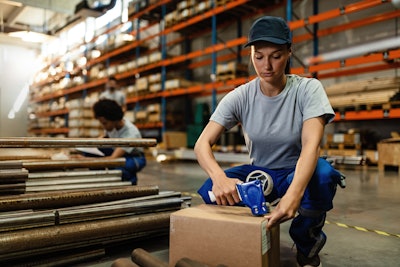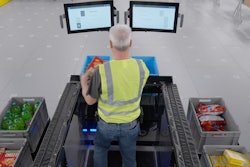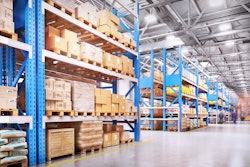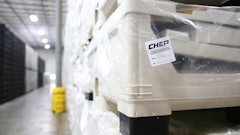
As CEO of a holding company that includes five enterprise-level co-packing facilities strategically located across the United States, my team works with a number of leading national consumer brands, packaging everything from complex point-of-purchase displays, to bundled drinks, to shrink-wrapped products for e-commerce.
Co-packing is a critical, largely invisible, part of the process that transforms their bulk cargo into their retail-shelf-ready products. It’s an industry that’s growing over 10 percent a year – before, during and after COVID – due to five key trends listed below that are driving CPGs to work more and more with their co-packing partners:
Flex capacity
Smart planning is challenging, as our CPG customers can’t use 2020 or 2021 as a benchmark or predicter for demand. They also know very well how unstable or unpredictable supply chains are due to COVID lockdowns in China, shipping snafus, labor disruptions, weather delays, trucking shortages or machine outages. Smart CPGs are addressing this lack of visibility by simply planning for the unplannable. They know the value of a loyal consumer over time, and they refuse to get distracted by oscillations in forecasts. Instead, they are laser focused on ensuring whoever is packaging their products has the flexibility and capacity to ensure their products can get to the right place and at the right time to make the sale.
Cost/Efficiency
After assuming their products are actually in stock, they need to make sure they’re cost affordable, especially in today’s inflationary environment. Most CPGs know the cost to build, maintain and support labor resources internally can be far greater than outsourcing expenses, especially as demand for resources constantly surges up and down. They understand their co-packers can also share equipment, software, specialty resources and facilities across customers, reducing the overall cost for each item packaged.
Omni-thinking/Innovation
Omni-channel marketing requires “omni-thinking.” A growing number of our CPG customers look to their co-packers as a value-add partner who can chime in with great ideas to help streamline inventory flows, reduce costs for manufacturing and transporting, improve close rates with consumers and get them to buy again – all across multiple channels. That’s a number of competing topics to consider. Chances are, however, their co-packers have seen every nuance before, they understand the tradeoffs up and down the value chain, and they can help anticipate and address challenges early to reduce costs and improve product sales.
Speed to market
In today’s environment, one never knows how SEO, the growth of influencers or perhaps a competitor’s issue will impact demand. What we do know is that the time to launch – from product concept to mass readiness – is dropping from months to weeks. Unfortunately, in today’s supply chain environment, by the time machinery can get ordered, received and configured, the launch cycle may be missed. Getting the right staff hired, trained and in place in the face of heavy competition for qualified employees and makes in-house packaging success uncertain. And finally, establishing the guardrails for quality processes and products only comes with practice and experience, which timelines can’t accommodate. CPGs understand that partnering with experienced co-packers lets them focus on contracting their development and production cycles – and leaving the co-packer to skip the steps above and get the goods ready for retail shelves early in the launch cycle.
Environmental sensitivity
More and more consumers are requiring sustainability and transparency. They will pay extra – or jump ship to another brand or option – based on how a product’s values align with the consumer’s expectations of what is appropriate. A growing number of next-gen co-packaging partners are responding by having the appropriate certifications and auditing in place to provide retailers, their consumers and the CPGs themselves confidence in the packaging process.
The State of the Industry Report, produced by the Contract Packaging Association https://contractpackagingreport.com/, summed up the growth drivers well. “CP/CM growth is being driven, in large part, by the evolution of the CPG product lifecycle. More products, shorter lifecycles, more competition, SKU proliferation, and other market forces are altering the lifecycle curve,” the report states (p. 107, Chapter 11 CP/CM Value Cycle).
Given these five trends, how should CPGs determine who is the right partner for them?
Seven characteristics of a good secondary co-packing partner
Within our CPG’s customers there often are multiple work groups with multiple priorities and interests – branding, sourcing, quality, logistics, supply chain managers, the marketing team, finance, channel or geo-specific sales and support, each with a different point of view about priorities.
So, assuming two or more co-packers qualify with the same capabilities, cover the same area and are competitively priced, how does your team choose the winner? At a minimum, you will want to start by asking whether your prospective co-packing partners have the following seven characteristics:
- First, resiliency is key. And multiple facilities provide resiliency. If one goes down, customers can be rerouted without overwhelming a single fallback facility. This requires Standard Operating Procedures shared across the enterprise and on-the-ground experience that seamlessly meshes.
- Second, your co-packer needs to meet consumer transparency requirements. They need to hold third-party quality/safety certifications and have the ability to anticipate and plan for greater government scrutiny (FDA, Labor Department., etc).
- Third, constant communication (across all platforms) means no surprises for CPGs and/or their customers. Your co-packing partner should have excellent systems and communication practices. Collaboration and relationships really matter. How can we – team members, customers, vendors, partners – work better together to recognize and overcome obstacles?
- Fourth, your co-packing partner should be able to listen up and down the organization. Ideas and resolution to issues are usually discovered at the bottom, not at the top. What kind of culture and formal structure exists to listen, learn and adapt
- Fifth, your co-packing partner needs to be laser-focused on quality. Every single person in the organization must have eyes on every aspect of the packing process. On a recent project in one of our warehouses, one of our hourly workers noticed that by making an extra visual inspection of tempered glassware just before boxing, the chance of packing a damaged piece fell to almost zero. Taking one more look added a step. And it added to the quality of our CPG’s product, so that’s how we do it now. Highly trained line leaders who are adept at leading team members, ensuring safety, driving results, spotting issues and anticipating challenges will differentiate the best co-packers.
- Sixth, your co-packing partner must also have access to the right people at the right time. That means, smarter worker management and relationships with multiple staffing firms help to scale up and down as needed.
- And seventh, but not last, your optimal partner will offer an end-to end-support system – quoting, technology, operations, business development, insurance management – with support teams that all are extremely knowledgeable and focused on the nuances of contract packaging.
We suggest qualifying each of the seven considerations and ranking them in importance – for your particular organization. Every co-packer is different, as we all are different sizes, focus on different capabilities, have various levels of sophistication and service different geographic footprints. It’s critical all parties find the right fit – for all the relevant constituents – for a win-win partnership that thrives across product lines and lifecycles.

![Pros To Know 2026 [color]](https://img.sdcexec.com/mindful/acbm/workspaces/default/uploads/2025/08/prostoknow-2026-color.mduFvhpgMk.png?auto=format%2Ccompress&bg=fff&fill-color=fff&fit=fill&h=100&q=70&w=100)







![Pros To Know 2026 [color]](https://img.sdcexec.com/mindful/acbm/workspaces/default/uploads/2025/08/prostoknow-2026-color.mduFvhpgMk.png?ar=16%3A9&auto=format%2Ccompress&bg=fff&fill-color=fff&fit=fill&h=135&q=70&w=240)








